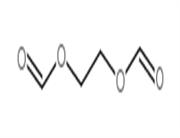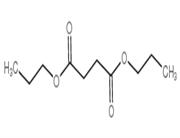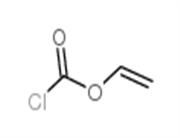Description
OTSSP167 is a highly potent MELK inhibitor with IC50 value of 0.41 nM.
Related Catalog
Signaling Pathways >> PI3K/Akt/mTOR >> MELK
Research Areas >> Cancer
In Vitro
OTSSP167 inhibits the growth of A549 (lung), T47D (breast), DU4475 (breast), 22Rv1 (prostate) and HT1197 (bladder) cancer cells with IC50 values of 6.7, 4.3, 2.3, 6.0 and 97 nM, respectively[1]. OTSSP167 can abrogate the mitotic checkpoint, disrupt MCC and MCC-APC/C interaction in MCF7 cells. OTSSP167 causes GFP-MELK localization to cell cortex in prometaphase cells[2]. OTSSP167 is a MELK selective inhibitor, exhibits a strong in vitro activity, conferring an IC50 of 0.41 nM[3].
In Vivo
OTSSP167 (20 mg/kg, i.v.) results in tumor growth inhibition (TGI) of 73% in xenograft mouse model; OTSSP167 (1, 5, and 10 mg/kg, p.o.) reveals TGI of 51, 91, and 108%, respectively. OTSSP167 (20 mg/kg, p.o.) shows no tumor growth suppressive effect on PC-14 xenografts[1].
Kinase Assay
For in vitro kinase assay, MELK recombinant protein (0.4 μg) is mixed with 5 μg of each substrate in 20 μL of kinase buffer containing 30 mM Tris-HCl (pH), 10 mM DTT, 40 mM NaF, 10 mM MgCl2, 0.1 mM EGTA with 50 μM cold-ATP and 10 Ci of [γ-32P]ATP for 30 min at 30°C. The reaction Is terminated by addition of SDS sample buffer and boiled for 5 min prior to SDS-PAGE. The gel is dried and autoradiographed with intensifying screens at room temperature. OTSSP167 (final concentration of 10 nM) is dissolved in DMSO and added to kinase buffer before the incubation.
Cell Assay
In vitro cell viability is measured by the colorimetric assay using Cell Counting Kit-8. Cells are plated in 100 μL in 96-well plates at a density that generates continual linear growth (A549, 1×103 cells; T47D, 3×103 cells; DU4475, 4×103 cells; 22Rv1, 6×103 cells; and HT1197, 2×103 cells, in 100 μL per well). The cells are allowed to adhere overnight before exposure to OTSSP167 for 72 hours at 37°C. Plates are read using a spectrophotometer at a wavelength of 450 nm. All assays are carried out in triplicate.
Animal Admin
MDA-MB-231 cells are injected into the mammary fat pads of NOD.CB17-Prkdcscid/J mice. A549, MIAPaCa-2 and PC-14 cells (1×105 cells) are injected subcutaneously in the left flank of female BALB/cSLC-nu/nu mice. DU145 cells are injected subcutaneously in the left flank of male BALB/cSLC-nu/nu mice. When MDA-MB-231, A549, DU145, MIAPaCa-2, and PC-14 xenografts has reached an average volume of 100, 210, 110, 250, and 250 mm3, respectively, animals are randomized into groups of 6 mice (except for PC-14, for which groups of 3 mice are used). For oral administration, OTSSP167 and other compounds are prepared in a vehicle of 0.5% methylcellulose and given by oral garbage at the indicated dose and schedule. For intravenous administration, compounds are formulated in 5% glucose and injected into the tail vein. An administration volume of 10 mL per kg of body weight is used for both administration routes. Tumor volumes are determined every other day using a caliper.
References
[1]. Chung S, Suzuki H, Miyamoto T, et al. Development of an orally-administrative MELK-targeting inhibitor that suppresses the growth of various types of human cancer. Oncotarget. 2012 Dec 21.
[2]. Ji W, et al. OTSSP167 Abrogates Mitotic Checkpoint through Inhibiting Multiple Mitotic Kinases. PLoS One. 2016 Apr 15;11(4):e0153518.
[3]. Cho YS, et al. The crystal structure of MPK38 in complex with OTSSP167, an orally administrative MELK selective inhibitor. Biochem Biophys Res Commun. 2014 Apr 25;447(1):7-11.
[4]. Li S, et al. Maternal embryonic leucine zipper kinase serves as a poor prognosis marker and therapeutic target in gastric cancer. Oncotarget. 2016 Feb 2;7(5):6266-80.

 China
China



